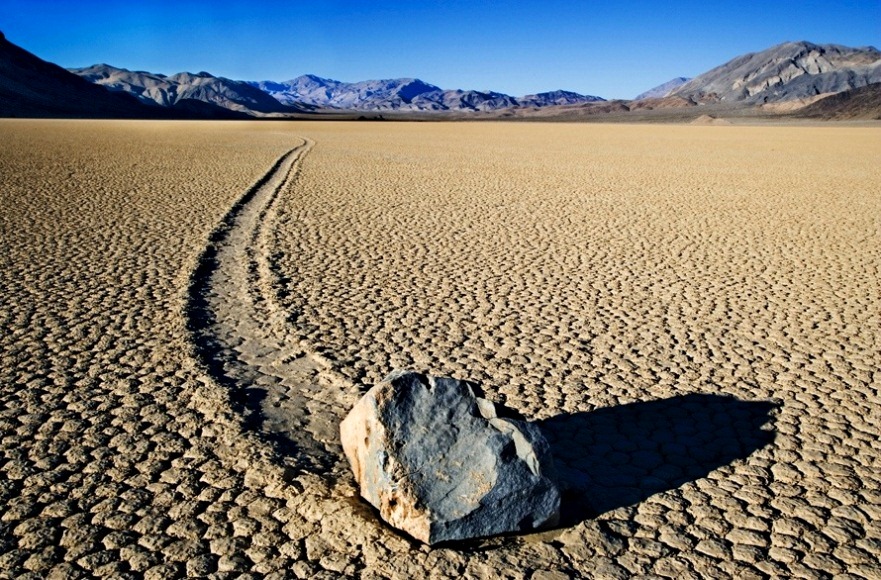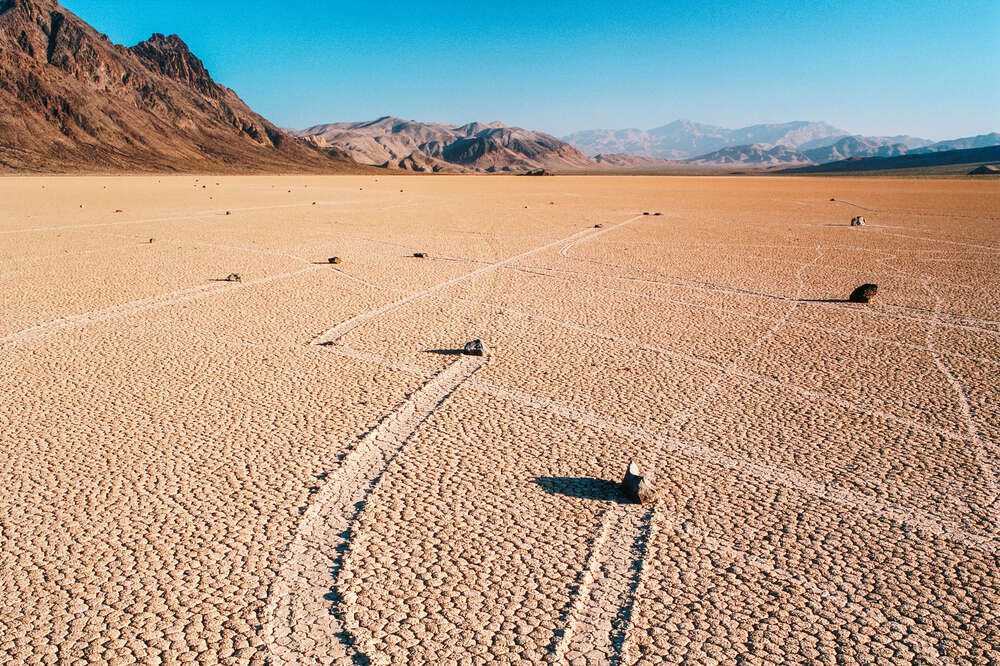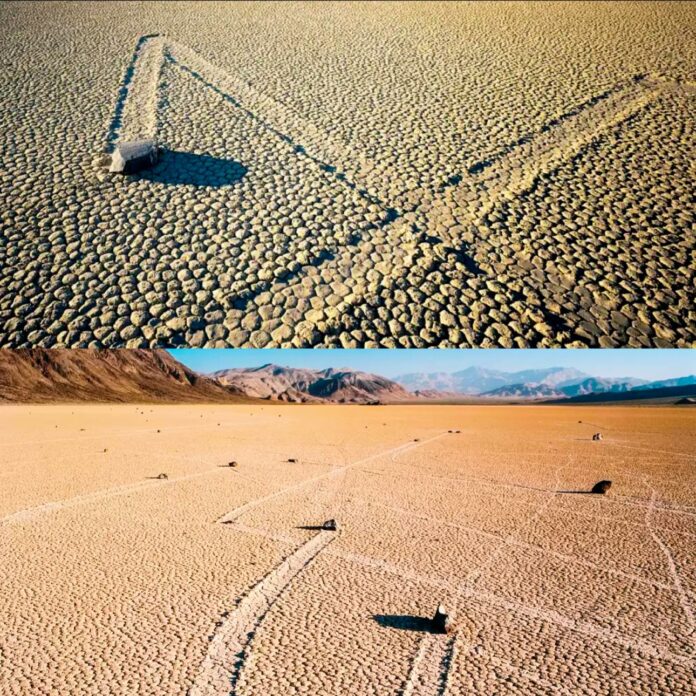For years, the mysterious movement of massive stones across the Racetrack Playa in Death Valley National Park has captivated the imagination of scientists and visitors alike. These enormous rocks, some weighing hundreds of pounds, have been leaving behind enigmatic trails in the muddy surface, sparking endless speculation about the forces responsible for their ethereal dance. However, a recent study conducted by researchers at the Scripps Institution of Oceanography at the University of California San Diego has finally shed light on the long-standing puzzle.
The Enigma of the Sailing Stones

The Racetrack Playa, a dry lakebed located in the remote and desolate reaches of Death Valley, has long been the stage for this curious geological phenomenon. Enormous stones, ranging in size from a few inches to several feet in diameter, have been observed to move across the flat, dried mud, leaving behind distinct trails that can stretch for hundreds of feet. This peculiar behavior has puzzled researchers for decades, with various hypotheses proposed to explain the stones’ movement, including powerful winds, thick sheets of floating ice, and even supernatural forces.
Cracking the Code: The Role of Ice and Wind

In a breakthrough study published in the journal PLOS One, researchers Richard Norris and James Norris have finally unraveled the mystery of the ‘sailing stones.’ By placing GPS-equipped stones on the same stretch of land and closely monitoring their movements, the researchers were able to observe the process in action.
The key to the stones’ movement lies in the delicate interplay between ice, water, and wind. During the winter months, a thin layer of ice, just a few millimeters thick, forms on the surface of the Racetrack Playa. As the midday sun melts this fragile ice sheet, the water and the rocks it has trapped are set in motion by the light winds blowing across the playa. This combination of melting ice, liquid water, and gentle breezes creates the illusion of the stones ‘sailing’ across the surface, leaving behind their distinctive trails.
“In contrast with previous hypotheses of powerful winds or thick ice floating rocks off the playa surface, the process of rock movement that we have observed occurs when the thin, three to six [millimeter], ‘windowpane’ ice sheet covering the playa pool begins to melt in late morning sun and breaks up under light winds of (about four to five meters per second),” the researchers wrote.
Implications and Insights

The unraveling of the mystery of the ‘sailing stones’ not only satisfies our curiosity but also provides valuable insights into the subtle interplay of natural forces at work in the harsh environment of Death Valley. The findings of this study demonstrate the power of careful observation, patient monitoring, and interdisciplinary collaboration to solve long-standing scientific puzzles.
Furthermore, the discovery sheds light on the delicate balance of ice, water, and wind that can shape the landscape over time, offering a glimpse into the dynamic processes that have sculpted the unique features of Death Valley and other arid environments.
Conclusion
The mystery of the ‘sailing stones’ of Death Valley has captivated the public imagination for decades, and the recent breakthrough by researchers at the Scripps Institution of Oceanography has finally provided a satisfying explanation for this enigmatic phenomenon. By unraveling the intricate dance of ice, water, and wind that propels these massive stones across the Racetrack Playa, the researchers have not only solved a long-standing scientific puzzle but have also revealed the subtle yet powerful forces that shape the natural world around us. This discovery serves as a testament to the enduring curiosity and scientific ingenuity that continue to expand our understanding of the world we inhabit.
